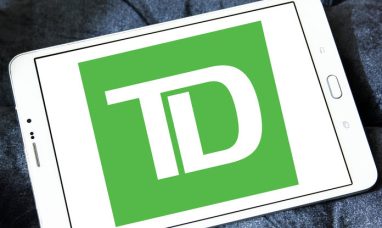Rivian Automotive, Inc. (NASDAQ:RIVN)
While I am a cautious investor, every once in a while, I like to take some chances and have a little fun. When defining what constitutes “risk,” each investor must decide. Even a cash-secured put on Rivian Automotive, Inc. (NASDAQ:RIVN) seems unsafe, given the company’s lack of profitability and the stock’s severe volatility. Although discipline in the long term is essential, a dose of excitement or danger every now and then might help. Realize where you stand and work within those parameters.
Seeking Alpha reports that Rivian stock has been trading upward ahead of the company’s earnings report, which is scheduled for release after the market closes today (February 28). I am trying to figure out what to make of Rivian stock since it seems pricey and cheap at the same time. There are several simple arguments supporting the overpriced thesis, such as (a) having a market cap of $17 Billion with a trailing twelve months sales of $1 Billion. It’s equivalent to 17 times annualized sales. Have we time-traveled to the year 2021 again? And (b) it’s growing crowded in the electric vehicle (“EV”) market.
The supporting evidence for the underappreciated thesis is straightforward: (a) the nascent nature of the electric vehicle sector and the government’s encouragement of its growth to 50% market share by 2030 (b) Rivian, perhaps the 2nd largest EV name (in terms of brand recognition), sold only around 4% of what Tesla did in Q3 2022, underscoring the ability to nibble away at the competition.
In sum, both bull and bear market proponents have valid arguments. In these situations, I hedge my bets using options instead of going all in. Specifically, on April 21, I will sell Rivian options with a $15 strike price for a $1 premium. In exchange for reserving $1,500 to purchase 100 shares of Rivian at $15 per contract, if the price drops to $15 or below before the expiry date, the put seller will get $100 in profit. With this amount, you may expect a return of 6.67 percent in about two months. That’s a decent rate of return if you ask me. An approximately 70% market expectation is that the stock price will be more than $15 at expiry. The almost 7% return is mine if the option expires without value.
If the stock price rises or time passes, the premium paid to hold a put option will decrease. Notwithstanding the stock’s crazy journey in the previous month, where it has experienced a range of $17 to $21 (chart below), the premium for the option chain I am contemplating has not decreased significantly in one month. A near 7% return in just two months demonstrates that, at the moment, this transaction offers more excellent value than usual (presumably owing to earnings release). This transaction is not without its dangers.
Risks
Rivian is scheduled to release its financial results. Today, February 28, presents the first and most evident danger. In the next several days, the stock may easily break $15 if the firm disappoints with its statistics or, more critically, its manufacturing ramp-up.
Since inflation has picked up steam again, the Federal Reserve is primarily anticipated to increase the pace at which it raises interest rates. This might lead to significant selling pressure for risky stocks like Rivian, whose beta of 2.29 indicates a potentially extreme price swing relative to the market as a whole.
Rivian’s stock is just a hair away from breaking out above its 200-day moving average, despite recently breaking above its 5-day MA, 20-day MA, and 50-day MA. Until the following earnings report is out, assuming that the stock has not found a floor is reasonable.
Why $15?
The other potential links in the chain for April 2023 are either too similar in strike price or premium for my liking. One such striking price is the April 2017 option with a $17.50 expiration, which offers a 10% return but is too close to the stock’s current price to be practical. Compared to this, the premium offered by the $12.50 strike price could be more appealing. While 20% higher than the current share price, the $1 strike price at $15 represents an almost 7% return on premium.
Even though Rivian is a riskier company than others, the potential double-bagger at the consensus price objective of $15 is attractive.
This is hardly a deal breaker, but if Rivian falls below $15, it will not only be trading at a 52-week low but at an all-time low. Rivian has already carved out a place for itself and stands to reap the rewards of being an early player in an industry now saturated. The fact that trading is at record lows makes for an exciting narrative.
Conclusion
Others have incorrectly lumped Rivian Automotive, Inc. in with companies like Affirm Holdings, Inc. and Zoom Video Communications, Inc., saying they “only” succeeded because of low-interest rate policies and COVID. In 2021, the macroeconomic environment was favorable, and Rivian Automotive, Inc. was able to capitalize.
However, it will be a choppy journey. As a long-time investor and Tesla, Inc. fan, I am fully aware of this. More and more R1S and R1Ts are appearing on the road, and even if some of my friends are still waiting for their delivery in 2024, I can’t help but feel optimistic about Rivian’s future.
When I’m on the fence about buying a stock outright but am interested in owning it, I’ll sell a put first to see whether the stock price goes up. But, negative market situations like the present make selling puts a potentially risky business. As I’ve stated, the amount of money I’ve set aside to sell this option is negligible compared to the rest of my holdings. The risk-reward ratio seems reasonable whether the put expires worthless or is sold at $15.
Featured Image: Pexels @ Mo Eid








